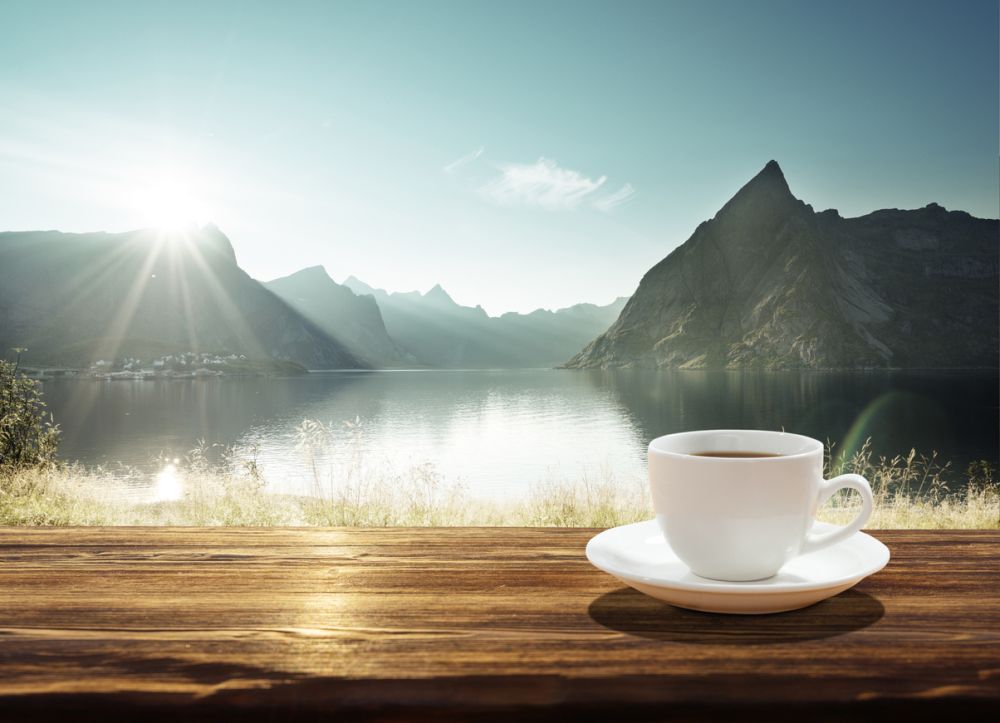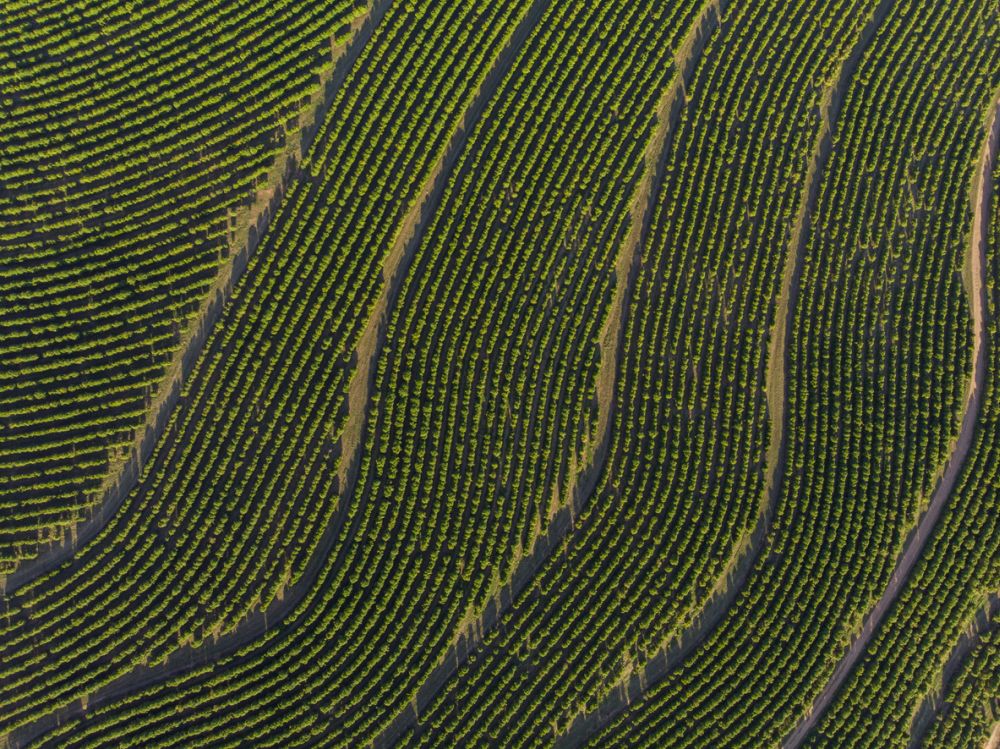Many factors go into making the perfect cup of joe: beans, grind, water, time of day… But one factor that is often overlooked is altitude. Find out everything there is to know about high altitude coffee and if it deserves your attention.

If you’re a coffee novice, you may not have heard about high altitude coffee, and that’s okay. You still have a lot to learn, and we’re here to help you.
In this guide, we’ll tell you everything you need to know about high altitude coffee, from what it is and where it comes from, to the reasons why it’s better than regular coffee.
But the myths and legends are true: high altitude coffee is better than regular coffee in more than just one way. And no, it’s not just because it’s more expensive.
Table of Contents
- What is high altitude coffee?
- Benefits of high altitude coffee
- What makes high altitude coffee so great?
- Should I buy high altitude coffee?
- FAQ
- Verdict
What is High Altitude Coffee?
In simple terms, high altitude coffee is coffee grown at high altitudes – typically over 3,000 feet (914 meters). But the term can also refer to coffee roasted at a higher altitude than usual.
Benefits of High Altitude Coffee
The benefits of growing coffee at high altitudes are numerous. For instance, the thinner air causes plants to grow slower, which gives the beans more time to develop flavor. The cooler temperatures also play a key role by allowing the beans to retain their natural oils and flavors longer.
High altitude coffee also tends to be fruitier and sweeter than regular coffee. This profile comes from a larger amount of natural sugars and aromatic compounds like terpenes, which develop slower at high altitudes.
But let’s not take the veil off too quickly.

What Makes High Altitude Coffee So Great?
In the following section, we’ll elaborate on the main characteristics of high altitude coffee and what makes it better than regular java. We’re also giving you insight into growing and processing it.
1. Mountain Areas Have the Ideal Growing Conditions
High altitude coffee is grown in mountain areas at altitudes significantly higher than sea level, such as hills taller than 900 meters.
However, height isn’t everything. More aspects come into play in growing high altitude coffee, including temperature, latitude, and soil.
Mountain areas offer the best ground for growing coffee because they have the ideal combination of elevation and temperature. Air is thinner at higher elevation, encouraging plants to grow slower. In turn, beans have more time to develop flavor.
Temperature is equally important since the climate has to be just right for growing coffee beans. The ideal conditions include a mild dry and cool wet season, allowing plants to flourish year-round.
Furthermore, the ground has to be suitable for growing coffee, which usually implies mountains with hilly slopes. The ideal altitude is between 2,500 – 6,000 feet (762 – 1,828 meters); the range ensures long days for photosynthesis and cool nights to give plants a chance to retain their oils and sugars for longer.
Lastly, latitude matters for high quality coffee because it determines the amount of sunlight received by the coffee trees.
2. Special, More Intensive Labor
Special care is necessary for growing high altitude coffee due to the challenging growing conditions. More specifically, the mountainous regions are labor-intensive because farmers have to climb up and down the hills to tend to the plants.
Additionally, the growing process takes longer than regular coffee – farmers must pick and sort the beans by hand before submitting them to the roasting process.
As for the roasting mode, high altitude coffee beans must be roasted at a lower temperature for longer. It’s a tedious process that requires serious skills but it’s all worth it since the beans gain deeper and richer flavors.
3. More Expensive on the Shelf
All previous factors we have discussed contribute to the top quality of high altitude coffee. However, it also means that it tends to be more expensive on the shelf.
As such, expect to pay more for high quality coffee than regular beans.

4. Better Light Roasts
In general, high altitude coffee tends to create better light roasts, thanks to the cooler temperatures, higher elevation, and thinner air.
So if you love light roasts, be sure to check out the selection of high altitude coffee on offer at your local store or online today.
5. Better Taste
Elevation, humidity, temperature, and soil all work together to create a sweeter, fruitier aroma in high altitude coffee. The combination of factors creates a unique flavor prized by many coffee connoisseurs.
Time also plays a key role in this process, because the coffee cherries take longer to ripen. In fact, experts found a correlation between altitude and coffee taste, as follows:
- 760 to 900 meters: mild, earthy taste, not as sweet as the beans grown at higher elevations
- 900 to 1200 meters: nutty, chocolaty, vanilla-scented sweet taste, but still not the sweetest yield
- 1200 to 1800 meters: fruity, sweet taste
6. Other Factors
Of course, the taste of your coffee is also heavily influenced by the way you prepare your cup. If you use the wrong grind, brew method, or water temperature, you may not experience all the right flavors.
But with a little research and experimentation, you can learn how to create the perfect cup of high altitude coffee at home. And once you’ve got it down, you’ll never want to go back to regular brew again!
Different elevations require different types of brewing, just so you know. For instance, if you want to make the most out of your 700 – 900 m coffee beans, you should brew them in a Moka pot, drip filter, or espresso machine.
Subsequently, 900 – 1200 m coffee beans are best to be brewed using a French press or pour-over. Meanwhile, 1200 – 1800 m beans should be always used with a French press or brewed cold.
Should I Buy High Altitude Coffee?
Now that you know a little bit more about high altitude coffee, you may be wondering if it’s worth the extra expense. And the answer is: it depends.
If you’re looking for a delicious cup of coffee, any good-quality beans will do. But if you’re looking for truly exceptional coffee, then high altitude coffee is definitely worth seeking out.
Keep in mind that high altitude coffee is more expensive, so you’ll need to be willing to pay a bit more for your beans. But in our opinion, the extra cost is definitely worth it for the better flavor and quality of this special brew.
So, if you’re ready to try something new and exciting, we recommend giving high altitude coffee a try. You may just find that it’s your new favorite cup of joe!
High Altitude Coffee (FAQ)
Discover more useful information about high altitude coffee:
Is coffee from higher altitudes better?
Yes, high altitude coffee is generally thought to be higher quality, because of the cooler temperatures and thinner air at these altitudes.
This results in a fruitier, sweeter flavor than you won’t find with beans from lower elevations. However, this doesn’t mean that you should automatically rule out low-altitude coffee – it all depends on your personal preferences.
Which type of coffee grows best in higher altitude?
Many different types of coffee grow at high altitudes. Some of the most popular include Arabica and Robusta. However, it’s more often for Arabica coffee to be grown at higher altitudes, because it is more resilient than Robusta.
How does altitude affect caffeine in coffee?
The higher the altitude, the lower the temperature and air pressure. This can result in coffee beans with less caffeine. However, this effect is usually negligible, and you probably won’t notice a difference in your cup of coffee.

Why does coffee taste better at higher altitudes?
Many factors affect coffee flavor, including elevation, temperature, and moisture. High altitude coffee is more flavorful due to the cooler temperatures and thinner air. However, this is just a theory – ultimately, you’ll need to try high altitude coffee for yourself to see if it’s right for you.
How should I brew high altitude coffee?
Different elevations require different brewing methods to bring out the best flavors. For instance, coffee from 700-900m should be brewed in a Moka pot, drip filter, or espresso machine. Coffee from 900 – 1200 m is best brewed using a French press or as pour-over, and coffee from 1200-1800m should be brewed with a French press or cold brew method.
What is the ideal elevation for growing coffee?
There is no one-size-fits-all answer to this question, as the ideal elevation will depend on the type of coffee you’re growing and your own personal preferences.
Generally speaking, Arabica coffee tends to do best at high altitudes of 1200m or above, while Robusta does better in lower elevations. So, it’s a good idea to start with these types of coffee if you’re new to high altitude growing.
What is the difference between Arabica and Robusta coffee?
Arabica coffee is grown at higher altitudes, while Robusta coffee is grown at lower altitudes. Arabica beans are also more delicate, so they require more careful growing and processing.
This results in a higher price for Arabica coffee, but many coffee drinkers believe that the extra cost is worth it for the better flavor.
How should I store my high altitude coffee?
Store your coffee in an airtight container in a cool, dark place. This will help to keep the beans fresh and prevent them from going stale. You can also store your coffee in the freezer, but be sure to thaw it out slowly to prevent the beans from cracking.
High Altitude Coffee (Verdict)
To sum it up, if you’re looking for a cup of coffee with a more intense, fruity flavor, then high altitude coffee may be the perfect choice for you. However, this doesn’t mean that low-altitude coffee is any less delicious – it all depends on your personal preferences and what types of flavors you enjoy most.
Brewing high altitude coffee can be challenging, but it’s worth it for the unique flavor of this special brew. Just remember to start with a high-quality bean, use the proper brewing method for your elevation, and store your coffee properly to keep the beans fresh. With a little practice, you’ll be a high-altitude coffee expert in no time!
Whether you’re new to high altitude coffee or a long-time aficionado, it’s important to experiment with different brewing methods and altitudes to find the perfect cup for you. So why not start your exploration today?
Leave a Reply